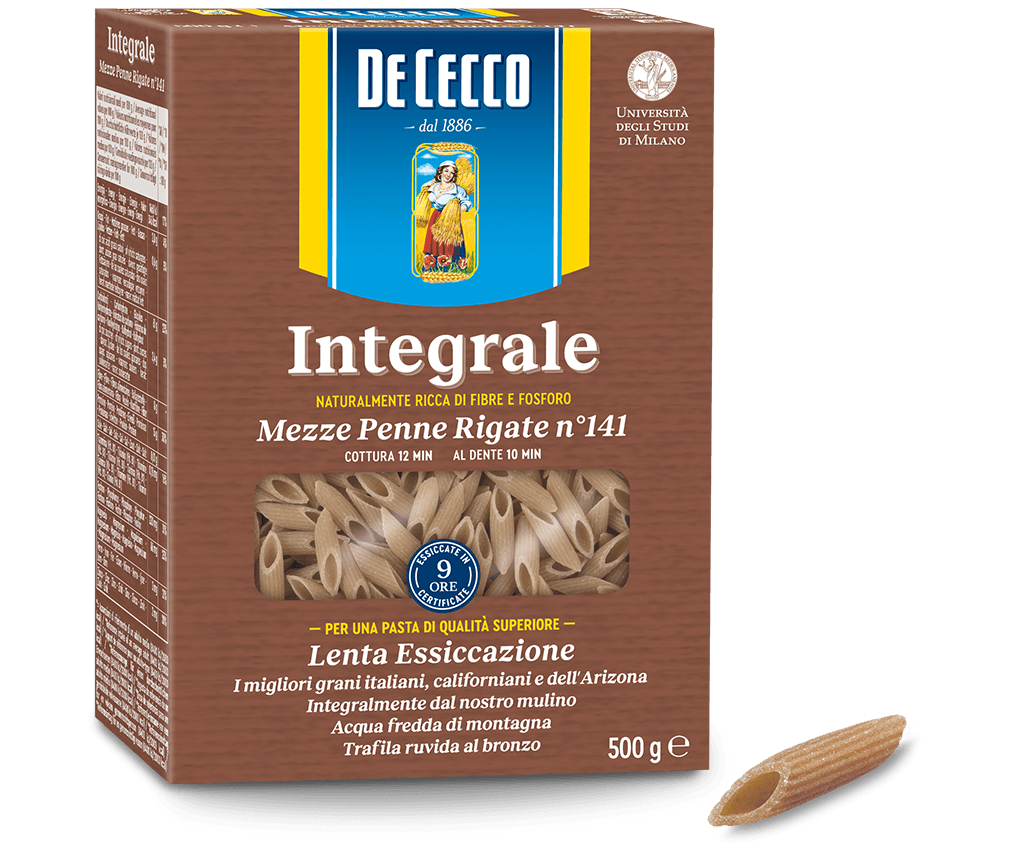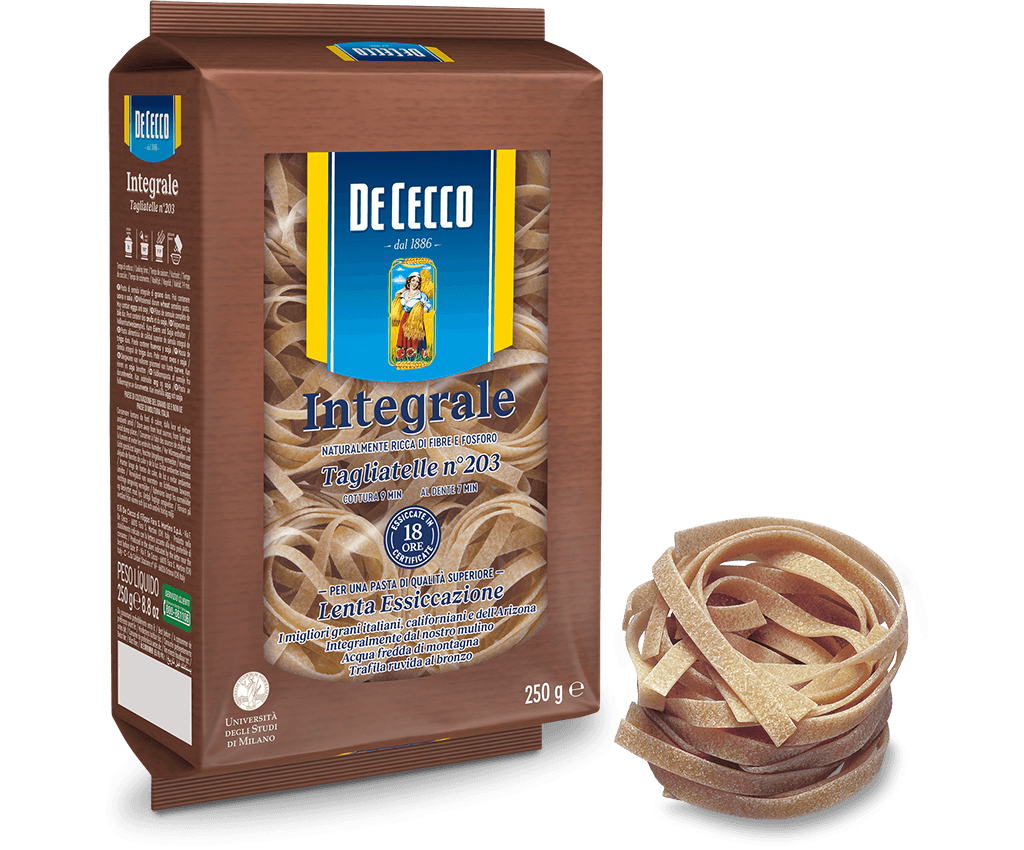Tagliatelle n° 203 Integrali
Tagliatelle are consumed all over Italy and are part of the long, flat pasta family.
They originate from the northern regions of Italy, especially in the culinary traditional in the Emilia Romagna region.
That Tagliatelle originated in Emilia Romagna is demonstrated by their presence in popular sayings and colloquial expressions used by the people from this region. An example of how Tagliatelle are profoundly rooted in Emilia Romagna is "Science in the Kitchen and the Art of Eating well" by Pellegrino Artusi: "Conti corti e tagliatelle lunghe" (literally, short bills and long tagliatelle) is a wise saying from Bologna because long bills frighten the poor husbands and short tagliatelle demonstrate the inexperience of the person made them and served them as if they were left-overs."
Their natural versatility makes them delicious with all types of condiments. They are excellent for first courses or in oven-baked dishes, perfect with fish or shell-fish based sauces, or with butter or white sauces made from soft cheeses and cream with the addition of curry or saffron.
Available in 250g packs
- Cooking time: 9 min - Al dente: 7 min
Our method
Attention, care, experience, quality at every stage: from our mill to your table.
Mezze Penne Rigate n° 141 Integrali
Mezze Penne Rigate belong to the family of Penne, but differ as they are slightly shorter.
In Italian, the term "Penne" refers to the goose feather which was used historically to write with and was cut on a diagonal to achieve a really thin tip. The shape, obtained from a pasta tube, can be smooth or ridged, of varying length and has the typical diagonal cut of a quill.
Penne are one of the few types of pasta for which there is an exact date when it was created. Indeed, in 1865, a pasta-maker from San Martino d'Albaro (Genoa), Giovanni Battista Capurro, requested and obtained a patent for a diagonal cutting machine. The patent was important because it meant the fresh pasta could be cut like a quill without crushing it and in different lengths from 3 to 5 centimetres (mezze "half" penne or penne). The document preserved in the Central Archive of the State of Rome reads: "Up until now, a diagonal cut could only be made by hand with a pair of scissors which, in addition to being slow and time-consuming, also resulted in an irregular cut which flattened the pasta".
The smaller-sized Mezze Penne Rigate are perfect for stirring up together with creamy sauces, both red ones made with tomatoes or white ones made with cheese, or with classic vegetable soups to be eaten with a spoon.
Available in 500g and 3 Kg packs.






